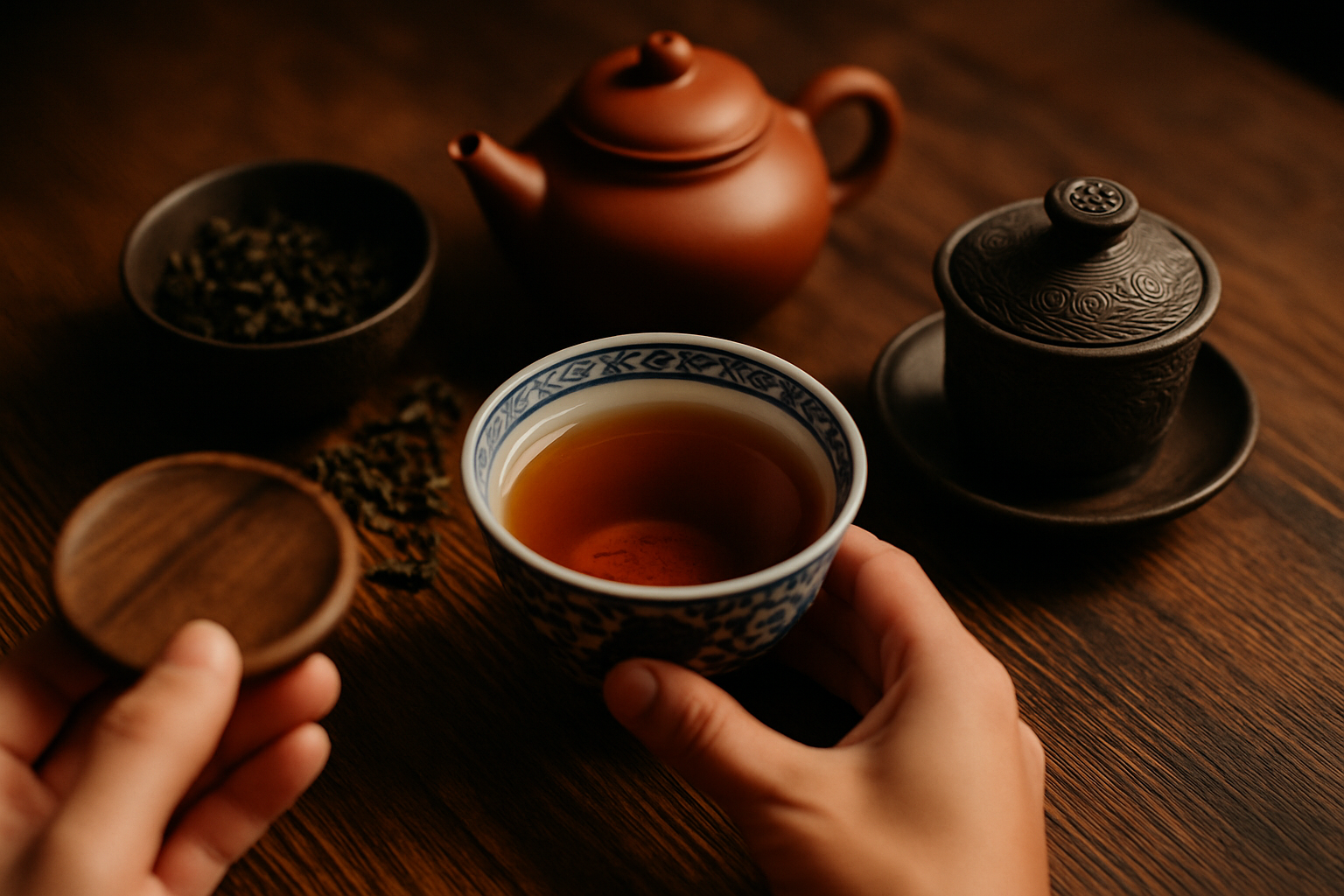The Five Senses of Tea

Tea is more than flavor. It is an encounter with all the senses, a quiet ceremony that draws the body and mind into presence. For centuries, tea has been prized not only for its caffeine but for the layered experience it creates. In Chinese gongfu cha, Japanese chanoyu, and countless daily rituals across the world, the senses are invited to participate fully. Sight, smell, touch, taste, and even sound work together, transforming the act of steeping leaves into something greater than refreshment.
Seen this way, tea becomes a teacher in attention. The chemical compounds that shape tea’s character—polyphenols, amino acids, volatile oils—are not experienced only through taste. They reveal themselves in aroma, texture, and color. When you notice these dimensions, you begin to understand why teas grown in different regions or processed in specific ways carry such distinct personalities. A cup of tea is not just consumed; it is experienced as a whole body practice.
The Sight of Tea
Vision sets the stage for everything that follows. Dry leaves give early clues about processing: the flat spears of Longjing show pan-firing, the twisted curls of Wuyi oolong suggest careful hand-rolling, and the tightly wound balls of tieguanyin reveal a craft meant to unfurl slowly. Once the leaves meet water, their color reflects chemistry. Chlorophyll and catechins create the emerald glow of Japanese sencha, while oxidation transforms black tea into amber and crimson hues. Even pu-erh’s dark liquor speaks to its microbial fermentation, which deepens over years of aging. To observe tea closely is to read its history before you ever taste it.
The Aroma of Tea
Smell is the sense most tied to memory, and tea’s aroma is shaped by volatile compounds released when hot water awakens the leaf. A floral tieguanyin contains linalool and geraniol, the same aromatic compounds found in orchids. Roasted oolongs and hojicha release pyrazines, responsible for their nutty and toasty warmth. Aged pu-erh develops geosmin, the same compound that makes earth smell rich after rain. These scientific realities underlie the poetry of tea’s fragrance, explaining why one cup can remind you of orchards in bloom while another evokes a forest floor.
The Touch of Tea
Texture is a less obvious but essential part of the experience. Amino acids like L-theanine contribute to the silky body of high-grade gyokuro, while polyphenols create the brisk astringency that sharpens an Assam. Some teas leave the mouth dry and alert; others, like milk oolong, coat the tongue with a custard-like softness that lingers. Touch extends beyond the liquid itself. The warmth of a clay pot in the hand, the fine weight of porcelain, or even the rough texture of compressed pu-erh all add to the impression that tea is something felt as much as it is drunk.
The Taste of Tea
Taste combines five basic sensations: sweet, bitter, sour, salty, and umami. Each tea emphasizes a different balance. The bitterness in matcha comes from catechins, while its sweetness and umami come from amino acids concentrated by shade-growing. A Darjeeling First Flush sparkles with muscatel notes due to terpenes that resemble those in wine grapes. Golden Yunnan’s natural honey tone comes from higher levels of theaflavins produced during oxidation. What is remarkable is that these tastes never act alone. They interact with aroma, touch, and sight to create a layered profile that no single sense could capture on its own.
The Sound of Tea
Even sound finds its place in the sensory landscape of tea. The rustle of dry leaves before steeping, the bubbling of a kettle at just under a boil, and the gentle pour of water over leaves all signal stages of the ritual. In Japanese chanoyu, silence itself is part of the soundscape, broken only by the whisking of matcha into a froth. In gongfu cha, the repeated filling and emptying of cups creates a rhythm, a reminder that the act of brewing is not mechanical but musical. Listening heightens awareness, making the tea session feel alive in ways that taste alone cannot.
How to Put This to Use
The next time you prepare tea, treat it as a full sensory practice. Observe the color of the leaves and the liquor, notice the aromas rising from the cup, pay attention to the texture on your tongue, and listen to the sounds of pouring and steeping. Each sense has its role, and together they create the experience we call tea. At Portman Tea, we encourage this approach through the multi-steep philosophy, where each infusion is not only another taste but another moment of awareness.
Tea is not only about what you drink. It is a way of inhabiting the present with all the senses awake. By bringing your whole body into the experience, you transform a daily habit into a journey of perception, one that leaves you more attentive, more connected, and more alive to the world around you.
